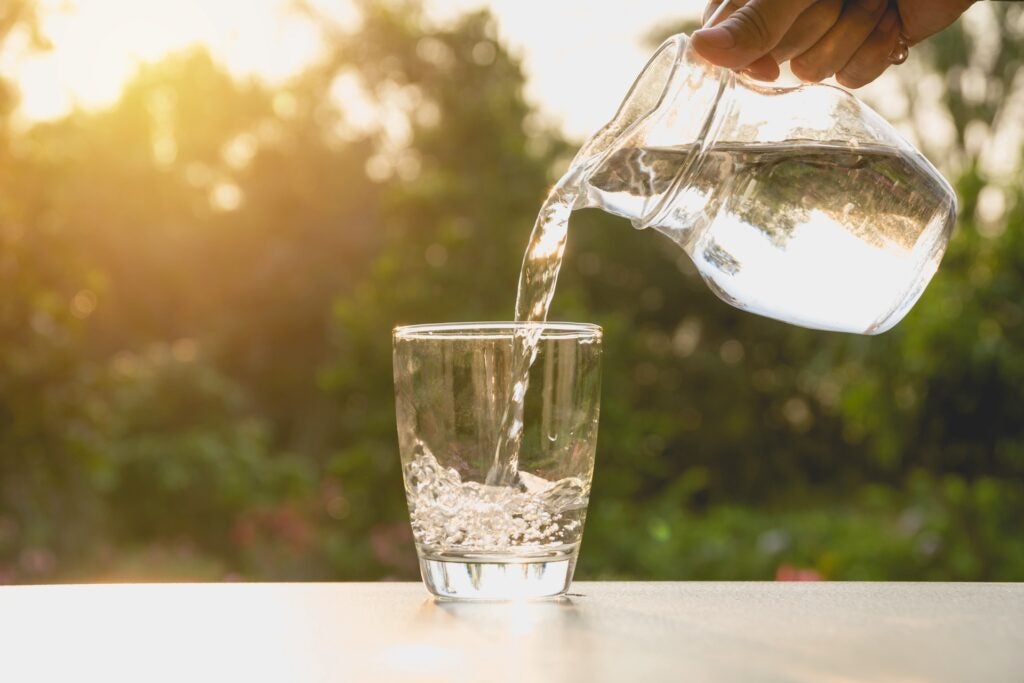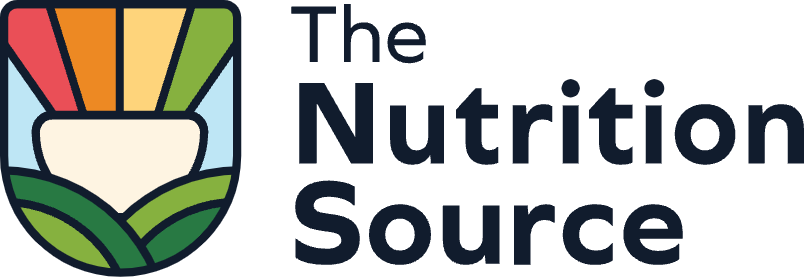
Introduction
In the beginning there was water—abundant, refreshing, providing everything the body needs to replenish the fluids it loses. Humans relied on it as their only beverage for millions of years. Milk came next, with the advent of agriculture and the domestication of animals. Then and and tea, all drunk for taste and pleasure as much as for the fluids they provide. The newcomers—, sports and energy drinks, and the like—offer hydration but with a hefty dose of unnecessary calories that the body may have a hard time regulating.
With so many choices, all with different, sometimes unexpected effects on health, it’s easy to be confused about the “best” beverages for health. This prompted a group of nutrition experts from across the U.S. to form the independent Beverage Guidance Panel. These six researchers, including of the Harvard School of Public Health’s Department of Nutrition, reviewed the evidence on beverages and health and ranked categories of beverages into six levels, based on calories delivered, contribution to intake of energy and essential nutrients, and evidence for positive and negative effects on health. [1] The winner? Water. But that doesn’t mean that water is the only beverage that’s good for your health, or that everyone needs to drink eight glasses of water a day.
Beverage Guidelines from the Experts
The Beverage Guidance Panel distilled its advice into a six-level pitcher, much as food experts have done with the food pyramid. The group published its recommendations in the March 2006 issue of the American Journal of Clinical Nutrition. Here is a description of each level:
Level 1: Water
Water provides everything the body needs—pure H2O—to restore fluids lost through metabolism, breathing, sweating, and the removal of waste. It’s the perfect beverage for quenching thirst and rehydrating your system. When it comes from the tap, it costs a fraction of a penny per glass. Water should be the beverage you turn to most of the time.
It’s impossible to set a single requirement for how much water the hypothetical average American needs each day. The amount you need depends on how much you eat, what the weather is, and how active you are. So instead of setting an estimated average requirement for water, as it has done for other nutrients, the Institute of Medicine has set an adequate intake of 125 ounces (about 15 cups) for men and 91 ounces for women (about 11 cups). (5) Note that this is not a daily target, but a general guide. In most people, about 80% of this comes from beverages; the rest comes from food. As for the oft-repeated nutrition advice to “drink eight glasses of water every day,” there’s little evidence to support it, but this would be one excellent way to fulfill most of a person’s fluid requirement.
Level 2: Tea and Coffee
After water, tea and coffee are the two most commonly consumed beverages on the planet. Drunk plain, they are calorie-free beverages brimming with antioxidants, flavonoids, and other biologically active substances that may be good for health. Green tea, especially the strong variety served in Japan, has received attention for its potential role in protecting against heart disease, while coffee may help protect against type 2 diabetes. (, ) More research on the health benefits of tea and coffee is needed, but one thing is for certain: The addition of cream, sugar, whipped cream, and flavorings can turn coffee or tea from a healthful beverage into a not-so-healthful one. For example, a 16-ounce Mint Mocha Chip Frappuccino with Chocolate Whipped Cream contains 470 calories. Tucked in this beverage (which is actually closer to a dessert) are 12 grams of saturated fat—nearly a day’s worth—and 71 grams of sugar, the equivalent of 17 teaspoons of sugar. () Keep in mind that for pregnant women, the jury is still out on whether high coffee or caffeine intakes increase the risk of miscarriage, but it seems prudent to limit caffeinated beverages to one cup per day. Learn more about coffee and health.
Level 3: Low-Fat and Skim Milk and Soy Beverages
For children, milk is a key source of calcium and vitamin D. Fortified soy milk is a good alternative source of calcium and vitamin D for those who prefer not to drink’s cow’s milk. Both are also good sources of protein and other essential micronutrients. Low-fat milk, sold as 1% or 1.5% milk, or skim milk, which is virtually fat-free, are the best choices because they contain much less saturated fat than reduced-fat milk or whole milk, which contain 2% and 4% milk fat, respectively. Even low-fat milk is high in calories, and high levels of consumption may increase the risk of prostate and ovarian cancer (see The Nutrition Source article for more information). So it’s best for adults to limit milk (and all dairy products) to a glass or two a day; less is fine, as long as you get enough calcium from other sources. For growing children, the ideal amount of milk and calcium is less clear, but not pushing beyond two glasses of milk per day appears to provide sufficient nutrition without being excessive.
Level 4: Noncalorically Sweetened Beverages
So-called diet sodas and other diet drinks are sweetened with calorie-free artificial sweeteners such as aspartame (Equal®, NutraSweet®, others), saccharin (Sweet’N Low®, Necta Sweet®, others), or sucralose (Splenda®); a new addition to the market are drinks sweetened with stevia, a calorie-free sweetener made from the leaves of a South and Central American shrub. These diet drinks are a better choice than sugar-sweetened soft drinks because they are lower in calories. But the possibility that suggests that they aren’t an innocuous alternative to water, and should be drunk as the occasional treat rather than as a daily beverage. For those who find it difficult to give up full-calorie soda, these may be useful in making the transition to healthier beverages, like a nicotine patch can do for smokers.
Level 5: Caloric Beverages with Some Nutrients
This category includes fruit juice, vegetable juice, whole milk, sports drinks, vitamin-enhanced waters, and alcoholic beverages. Each has its pluses and minuses. One-hundred-percent fruit juice has most of the nutrients of the fruit itself, but it usually delivers more energy. The Dietary Guidelines for Americans recommends no more than one serving (4 ounces) of 100% fruit juice as part of the daily fruit intake. Fruit smoothies are usually very high in calories, and so aren’t recommended as daily beverages. Vegetable juice is a lower calorie alternative to fruit juice, but may contain a lot of sodium. Whole milk is a good source of calcium and vitamin D, but has nearly twice the calories as skim milk. Whole milk is also a significant source of saturated fat, with 4.5 grams per glass. Sports drinks have fewer calories than soft drinks, and offer small amounts of sodium, chloride, and potassium. They aren’t needed by casual athletes or daily walkers. The only people who really need them are endurance athletes who exercise for more than an hour at a stretch and who sweat a lot. Vitamin-enhanced waters, meanwhile, are not necessary for anyone who takes , and adding vitamins to a sugary drink does not make it a healthy choice. Alcohol may have benefits for some but may be hazardous for others, and entire books have been written on the subject (see The Nutrition Source article for more information).
Level 6: Calorically Sweetened Beverages
The Beverage Guidance Panel gave its “least recommended” designation to beverages that are sweetened with sugar, high-fructose corn syrup, or other high-calorie sweeteners and that have few other nutrients. These include carbonated and noncarbonated soft drinks, fruit drinks, lemonade, and other “ades.” They get the thumbs down as a daily beverage because they provide so many calories and virtually no other nutrients. Routinely drinking these beverages can lead to weight gain and increase the risk of type 2 diabetes. Fruit smoothies, many flavored coffee and tea drinks, and some so-called energy drinks also fall into this category. (For a handy guide to the calories and sugar in popular beverages, see on The Nutrition Source.)
Putting It All Together: A Sample Beverage Plan
Your body would be perfectly content if you drank nothing but water. You would get all the fluid you need, and you would get all of your nutrients from food. But with so many choices available, most people drink a variety of beverages. To give some perspective to choosing beverages, the Beverage Guidance Panel poured its recommendations into a pitcher (see our version above). The exact number of ounces isn’t what’s important—these are given for a typical person taking in 2,200 calories a day. What matters are the proportions. Here’s one way the Panel suggests getting less than 10 percent of daily calories from beverages:
- At least half of your daily fluid should come from water. For a person who needs 12 cups of fluid a day, that would mean six cups of water. More is fine—up to 100% of your daily beverage needs.
- About one-third (or about three to four cups) can come from unsweetened coffee or tea. If you flavor your coffee or tea with a lot of sugar, cream, or whole milk, then drinking less would help manage weight. If you take a pass on coffee or tea, choose water instead.
- Low-fat milk can make up another 20 percent, or about two 8-ounce glasses. Less is fine, just make sure you get your calcium from another source.
- A small glass (4 ounces) of 100% fruit juice, and no more than 1 to 2 alcoholic drinks for men or no more than 1 for women.
- Ideally, zero “diet” drinks made with artificial sweeteners, but up to 1 to 2 glasses (8 to 16 ounces) a day (this is adapted from the Beverage Guidance Panel’s original recommendation of up to 32 ounces per day).
- Ideally, zero drinks sweetened with sugar or high-fructose corn syrup, but up to a maximum of 8 ounces.
*Suggested beverage consumption pattern for a person who requires 2,200 calories per day, providing 10 percent of calories from beverages. The values 50, 28, 16, and 4 fluid ounces are shown for illustrative purposes only; the total should sum to 98 fluid ounces, as shown at the top of the figure. The range listed at each level refers to the Beverage Guidance Panel’s suggested consumption range for each beverage. Caffeine is a limiting factor for coffee and tea consumption; up to 400 mg per day, or approximately 32 fluid ounces of coffee per day (can replace water). Noncalorically sweetened beverages can substitute for tea and coffee with the same limitations regarding caffeine, up to 16 fluid ounces per day (this is adapted from the Beverage Guidance Panel’s original recommendation of up to 32 fluid ounces per day). Adapted with permission from Am. J. Clin. Nutr. (2006; 83:529-542), © American Society for Nutrition.
References
1. Popkin BM, Armstrong LE, Bray GM, Caballero B, Frei B, Willett WC. A new proposed guidance system for beverage consumption in the United States. American Journal of Clinical Nutrition. 2006; 83:529-542.
2. Kuriyama S, Shimazu T, Ohmori K, Kikuchi N, Nakaya N, Nishino Y, Tsubono Y, Tsuji I. Green tea consumption and mortality due to cardiovascular disease, cancer, and all causes in Japan: the Ohsaki study. Journal of the American Medical Association. 2006; 296:1255-1265.
3. Van Dam RM, Willett WC, Manson JE, Hu FB. Coffee, caffeine, and risk of type 2 diabetes: a prospective cohort study in younger and middle-aged U.S. women. Diabetes Care. 2006; 29:398-403.
4. Starbucks beverage details: Mint Mocha Chip Frappuccino® blended coffee with Chocolate Whipped Cream. Accessed on March 28, 2009.
5. Institute of Medicine. Dietary Reference Intakes for Water, Potassium, Sodium, Chloride, and Sulfate. Washington, D.C.: National Academy Press, 2004. Accessed on March 28, 2009.

